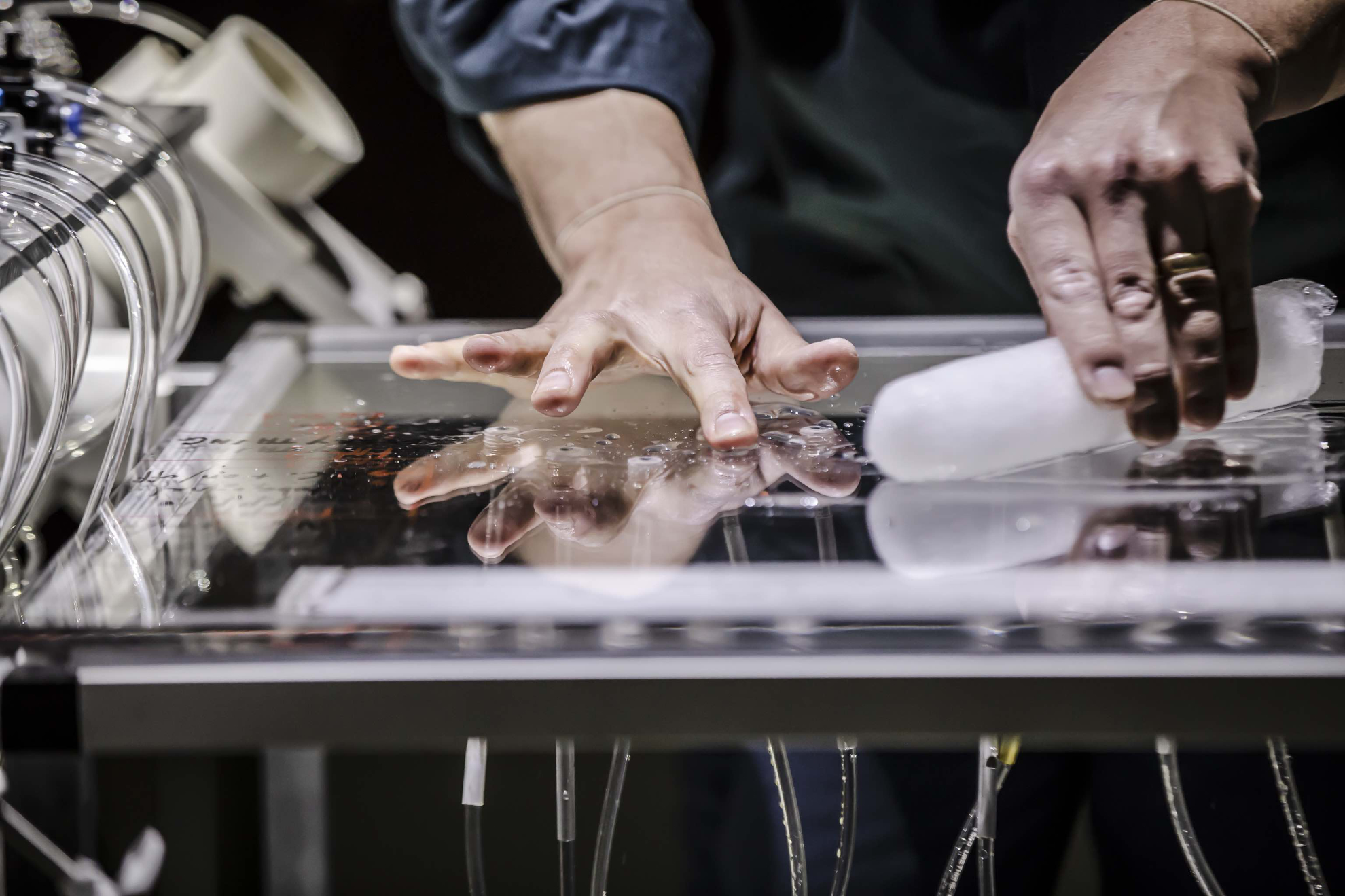Interview by Silvia Iacovcich
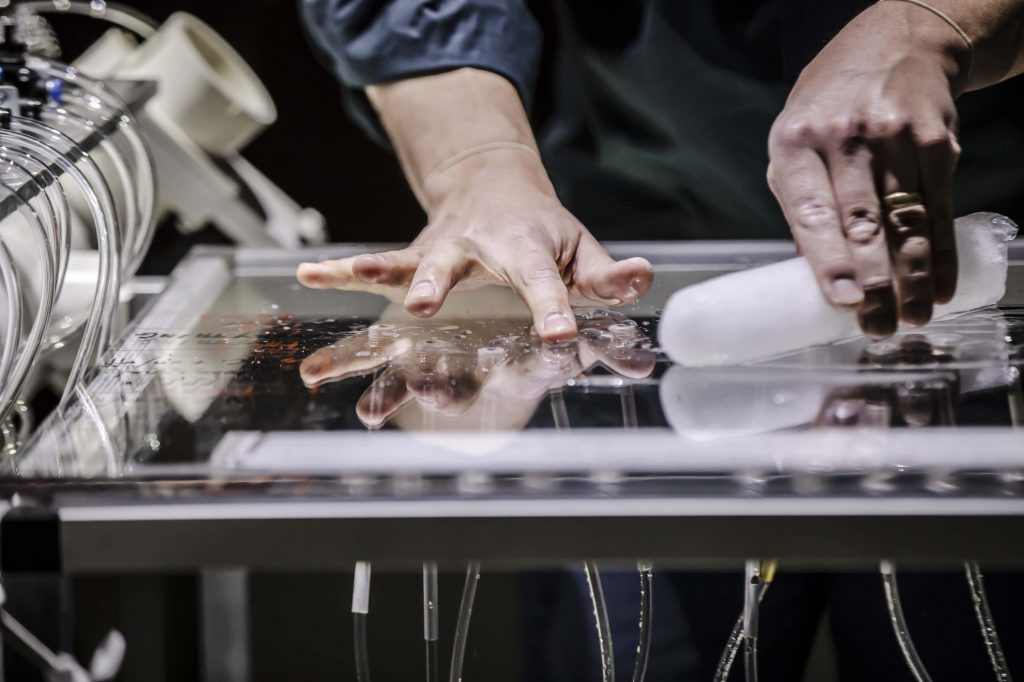
There is an incredible supply of life in Antarctica, even though the region is often perceived as a barren solitude of ice. It is undeniably the coldest, windiest, and driest continent on Earth – 98% of its entire territory is indeed covered with crystal blankets. So far from being dead, though, chromatic sounds break the intensity of silence; and the combination of environmental factors produces musical reverberations and splashy soundtracks.
Sound artist, researcher, and RMIT University Academic Dr Philip Samartzis knows it well – his investigative sound projects often include expeditions that take him to the edges of the world: he has indeed travelled to Antarctica twice to share through his worldwide performances and exhibitions the dynamics of life in the remote earthly wilderness.
The collaboration between Samartzis and percussionist, composer, and conductor Eugene Ughetti is organic: they are both Melbourne based both Aussies, and both constantly looking for new forms of sound generation, expression and audition, spanning an incredible joint experience of performance and composition.
They got together to convert Samarztis’ last trip into a performance work, converging on a multitude of angles: a new exploration of the impact of extreme environmental conditions on people and their adaptation to it, the volume of sonic surroundings in extreme territories, the legacy of Antarctica and its intrinsic geographical significance.
Samartzis’ collection analyses the interrelation between an exclusive habitat and its unvoiced presence and humanity through soundscapes, echoes, and compositions. In 2015, the artist captured the sounds of the polar breath: the katabatic wind, cold, dense air that discharges the ice slope to the sea, the highest and strongest becoming compact and impenetrable while taking up its speed.
Polar Force, presented by Speak Percussion (whose Ughetti is also Artistic Director), is as dense as a parallel world – a white inflatable structure whose morphology resembles an inaccessible remote station on permafrost that lets the audience experience the aggregated sounds of a singular environment – a hyper-realistic Antarctica – from the inside out. This hour-long multi-sensorial performance allows us to encounter the ferocious forces of nature, suspending time in a hypnotic, meditative dimension.
We hear ice cracks, deafening metal clattering noises, ice layers breaking and water shattering, and new forms and colours reimagined by the two artists. At the same time, they move around the space, combining multi-channel recordings with acoustic, custom made and designed ice instruments and wind machines, narrating the relationship between natural beauty and the evidence of human impact and its vision.
In Array, we experience the sounds of sophisticated technology, the instrumentation used for upper atmospheric research and terrestrial communication, witnessing the life of a station in remote Antarctica. Throughout the journey, we get to know the metamorphosis and the fusion of this human-built environment, the struggles and adversities generated by the extreme-freezing-temperature climate and weather circumstances:
field recordings and layers of live performance produce a series of textures and cycles, amplifying the tension and the pressure, allowing us to feel the precarity and volatility: the hostile resolution of a super modern colony that provides a paradigm representing where we are going and what we are bringing with us.
Projects like these remind us of the fundamentality of sound, its ability to let us experience our role, and the impermanence of nature. But the duo doesn’t aim at being political: each project allows the listener to find a kaleidoscope of dimensions, not necessarily forcing upon the listener some unwanted questions – although they are there, unsuspended in one of those layers, you have to touch them with your ears.

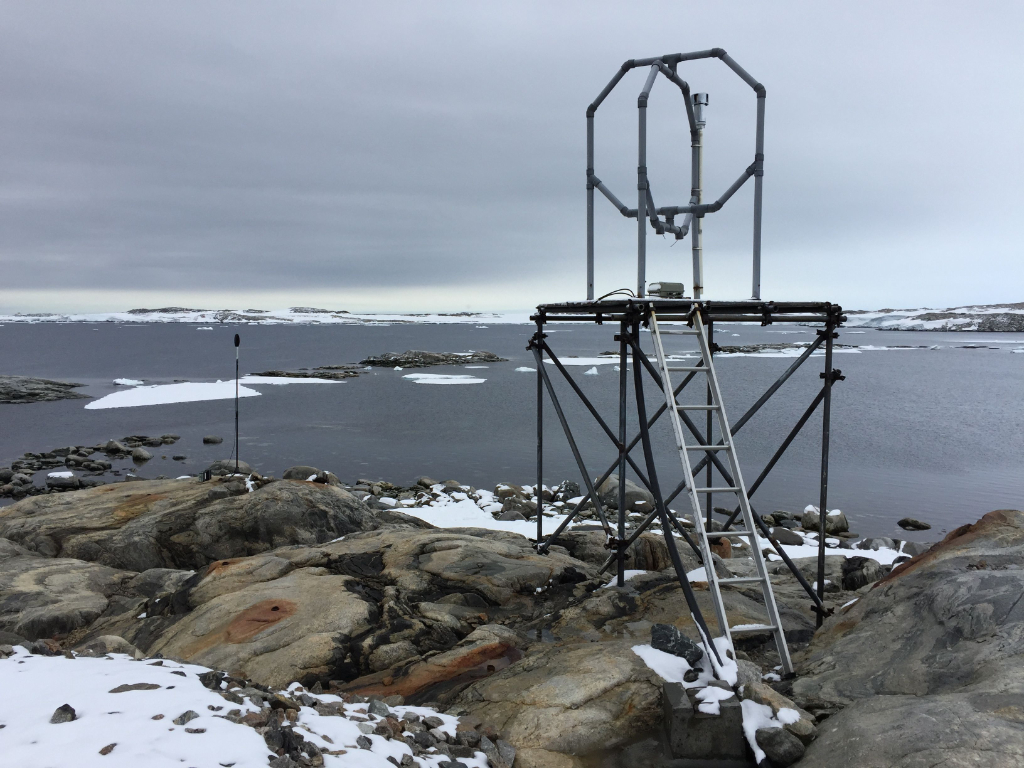
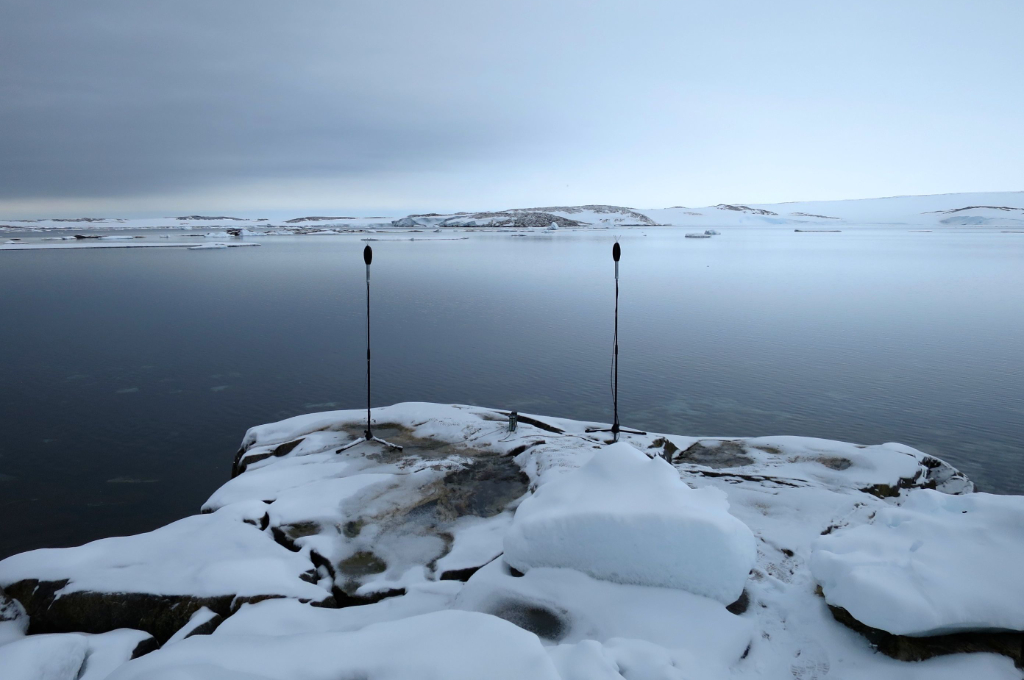
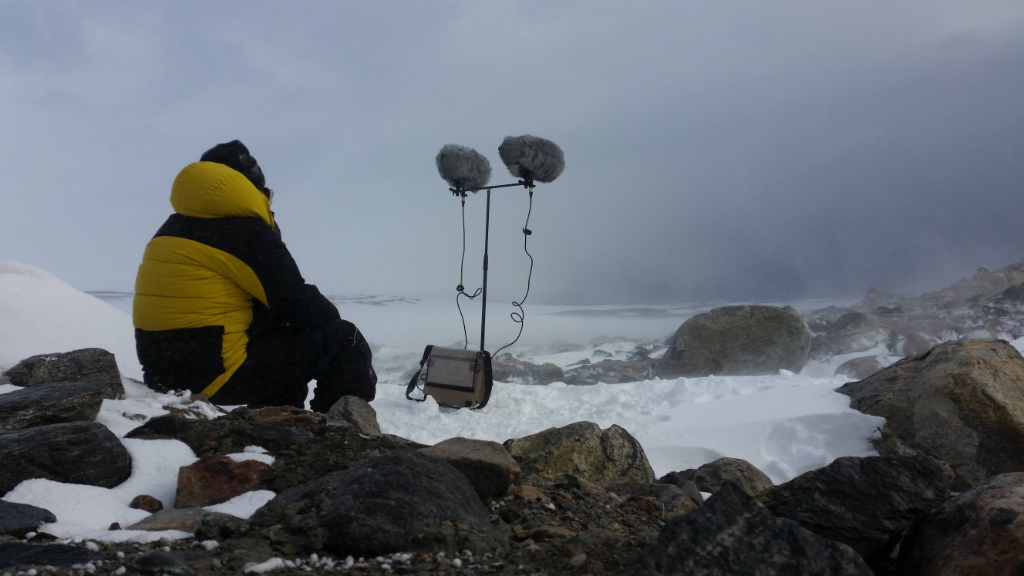
For the readers who are not familiar with your work, where did you meet, and what were the main sources of inspiration that influenced your careers?
Philip Samartzis: I have always been attracted to sound art and experimental music for the way they suggest new forms of sound generation, expression and audition. Therefore, sound as a method of research and a process of thinking has always been a focus of the music I enjoy. My attraction to experimental sound and music led me to formally study at university – an opportunity I used to explore various ideas through recording, exhibition and broadcast.
While there are many influences that I can cite that have been transformative in the way I hear the world – the key composers I continue to reference are Bernard Parmegiani for his concept of metamorphosis, Douglas Quin for the way he expresses bioacoustic ecologies and Knud Viktor for his research into atmospherics and ephemera.
Together these artists suggest new ways of perceiving the world through the aperture of sound recording and the choreography of time and space. Eugene, through his work and leadership of Speak Percussion, is very much part of this realm which is what drew me to work with him on the Polar Force and Array projects.
Eugene Ughetti: It’s hard to say precisely where Philip and I met, being both based in Melbourne, but I know for certain that we caught up at Toto Pizza (Australia’s first pizza restaurant) to discuss the possibility of this current collaboration. My artistic practice is centred around an expanded form of percussion. It places me in roles spanning performance, composition, direction, instrument design, and conducting curation, and I am the Artistic Director of Speak Percussion.
My work has evolved out of experimental and avant-garde art music traditions and has long been interdisciplinary. Having started drumming at 6 years of age, I cut my teeth playing concert band, metal, grunge and jazz music. Then I migrated over to classical percussion, covering the full spectrum of the orchestral, chamber and solo repertoire. Some of my major influences include Karlheinz Stockhausen, Fritz Hauser and Jon Rose.
What inspired you to create two batches of sound that explore the sonic conditions at the Antarctic Research Stations? How did you combine both your experiences and creative process into the project, and what were the main challenges and perks on the way?
PS: In 2015, I was awarded an Australian Antarctic Territory Arts Fellowship to travel to Casey Station in Eastern Antarctica to produce a series of sound recordings focusing on the presence and effects of katabatic wind. Before I departed, I contacted Eugene to ask whether he would be interested in developing a musical response to the field recordings that I planned to produce.
The premise for the collaboration is based on my first trip to the Antarctic in 2010, where I spent six weeks recording in and around Davis Station. During my time there, I noticed that the built environment of the research station often sounded like a monumental work of modernist percussion music in the style of Iannis Xenakis.
This was due to the velocity of wind activating various surfaces and materials comprising the station along with the roar of the wind, ice and snow and the way in which they muted or accented different elements of the polar environment. The visceral and haptic quality of these immersive and affective deep listening experiences suggested new forms of expression through both sound recording and instrumental articulation.
After I returned from Casey Station, I presented Eugene with a broad assortment of sound recordings as a reference point for his consideration. Over several years we worked together to develop a range of responses in which new arrangements and interactions were produced to express the arcane and rarefied characteristics of an Antarctic research station and its attendant operations and instruments.
EU: Polar Force and Array are companion pieces and are contrasting works made of the same stuff. Polar Force is presented as a live performance installation; this was the starting point of the collaboration, which is situated in my home territory of performance. The Array is an 8-channel sound installation and is a more focused articulation of the architecture and sonic landscape of the Antarctic field recordings.
My goal in this project was to conceive of a bespoke instrumentation designed to manipulate the same raw materials captured in the field; wind, ice and water. After a substantial collaboration with the RMIT Industrial Design School, Malte Wagenfeld and Nick Roux, we achieved our goal of having constructed an entirely new set-up of acoustically activated instruments for the project. I wanted us to look and feel like scientific researchers rather than music, and this was reflected in the design.
The project is an ambitious one to install and present; it utilises a large inflatable performance space, multiple fans, an air compressor, a custom lighting rig, a white floor, costumes and, of course, the industrially designed instruments. Perhaps the biggest obstacle has been touring the work, which requires us to freight a shipping container.
In Array, representation and abstraction are combined in an effort to reinterpret the conditions that researchers have to endure during their permanence in the Australian Antarctic Territory – how did you work on finding a balance between performance and recordings? Did you start from the mechanical or the sensorial side?
EU: The field recordings were our starting point for Array, choosing from a large number of Philip’s recordings, often settling on a series used in combination to construct a sound world and timbral palate for the work.
These choices were motivated by what interested us sonically rather than selecting explicitly anthropogenic or eco-acoustic materials, with the knowledge of how the field recordings might be combined with the performed material. It was then a question of speaking the same language with the acoustic instruments in order to augment, distort and respond or to use your words, represent and abstract. Our goal was to render the performance and the field recordings indistinguishable from one another.
Array seems to be delivering the idea of a positive relationship between technology and nature – what is your personal relationship with machinery and robotics, and how do you see its future implementation in natural environments?
PS: All the technology used in Antarctica is designed to preserve life. Therefore, it is hard to criticise it when one is so reliant on the buildings, systems and protocols used to sustain our presence there. That said, an Antarctic research station is like a mining camp with all the attendant detritus and environmental impacts it produces. While the Australian Antarctic Division is actively trying to reduce its carbon footprint and the general waste of its research stations and vessels, produce, there is still a large reliance on diesel and aviation fuels used to resupply and run the stations that make them carbon-intensive places to serve.
There are also environmental impacts caused by untreated effluent released into the ocean and the accumulation of waste, fuel drums and redundant technologies waiting to be decanted from the continent. Therefore our presence in Antarctica has a steep environmental impact which is growing exponentially as more nations build research stations on the ice continent.
An Antarctic research station is a technologically intensive place with many different types of instruments being used to monitor and measure the environment. Most of the science undertaken in the Australian Antarctic program is done remotely, with the data produced by different sensors and radars transmitted directly to universities and research centres.
While there is some science undertaken in person, the make-up of a research station is usually a mix of tradespeople, weather and climate forecasters, engineers and mechanics, pilots, and comms operators. The blend of people and the range of activities that occur on a station are particularly fascinating to me and one of the reasons I continue to be attracted to places on the margins of our planet. Array, in many respects, focuses on the material nature of the many varied scientific instruments that appear as sentinels across the barren terrain.
They each sound differently as objects in the landscape activated by relentless wind and cold. While they are often registering events on the edge of elsewhere, they each communicate something of the Antarctic experience through their architectural and material form that is as much a part of the soundscape as are the Adelie and Emperor penguins and Weddell and Southern Elephant seals.
What were the challenges and the main points of focus faced in reproducing and performing a fragile ecosystem – so unique – as you did in Polar Force?
EU: Ice is a slippery dynamic material at above-zero temperatures. The original goal was to build a tactile ice wind instrument, but it proved too difficult and expensive. The fragility of the musical materials throughout the work became both a source of technical focus for the performers, through gaining a degree of control and expression, and an opportunity for the materials to find their voice in the work and to wreak a degree of natural indeterminacy into the performance.
How did you work on your methodology of composition in relation to the performative side of Polar Force, and what were the main sources of experimentation?
EU: The composition was formed through an iterative process of material handling (the sound of ice, wind and water), field recording analysis and instrument building and design. As strong ideas were discovered, they were shaped and refined into forms that would make sense in a live performance context and alongside relatively unaltered field recordings.
Both Polar Force and Array combine delicate, soothing and calming natural reverberations, stressing out their fragility and driving the listener to a reflection on the environmental crisis as well – is it intentional?
PS: I think it is important that audiences are free to experience the work without being too prescriptive in how it should be read or how one should feel about it. Antarctica is an interesting subject to present to audiences as it is a place that very few people have actually visited. Therefore our encounter with the ice continent is usually mediated by the arts or the media, opening it up to different interpretations and emotions.
For some, it is a place of dreams, while for others, it is a place of horror. It is often discussed in the news, but it is a place that is as difficult to access as the moon. All these different intersecting bands of knowledge, interests and biases produce quite a complex set of reactions when presenting works such as Polar Force and Array. As an artist, my intention is to let the continent speak for itself so my field recordings are as authentic to the firsthand experience I had as I can make them.
EU: Yes, my goal was not to make a work that was dogmatic or overtly demonstrative of the climate crisis. However, in the process of creating Polar Force, it was, in fact, impossible for the intra-activity of humans and Antarctica to not reveal itself. Everywhere you turn, each sound that is heard in the work is an articulation of our relationship to the great continent, and this is inevitably entangled with the climate crisis too.
What’s the chief enemy of creativity?
PS: I think authenticity is the central plank of my creative impulse. By that, I mean being clear on the things that genuinely excite me, that challenge me to try harder, to work ethically and sustainably, and to contribute rather than exploit. The flip side on that I guess, is creativity being underpinned by disingenuous motives which have no wider benefit to the community or society. I loathe, however, to criticise anyone’s creativity as it is so central to being human and the key to addressing so many local and global challenges.
EU: Having no problems to solve, stress and anxiety.
You couldn’t live without…
PS: Espresso.
EU: Oxygen.

